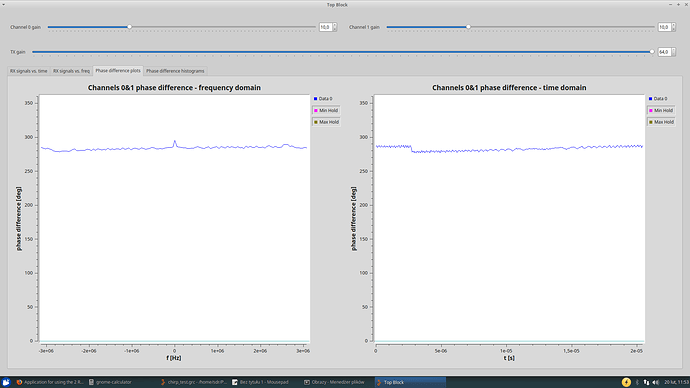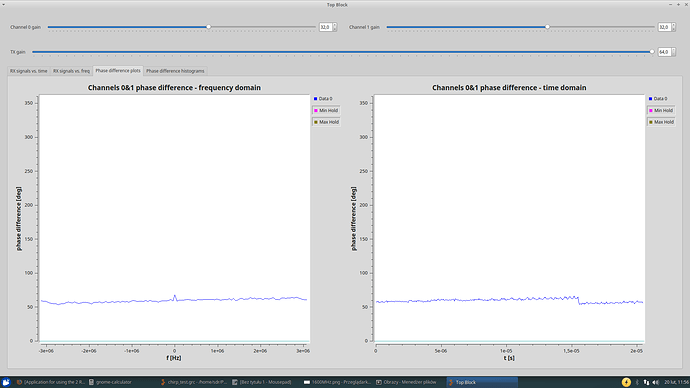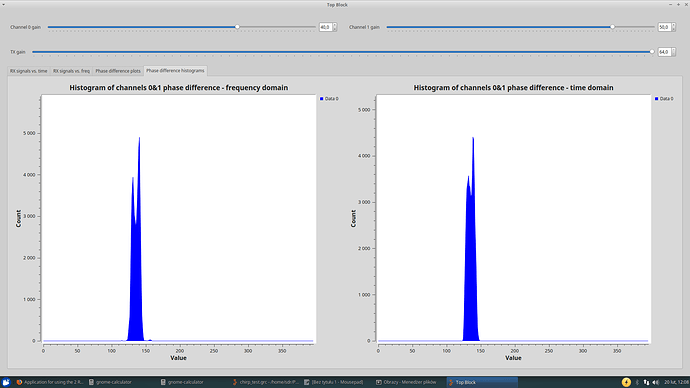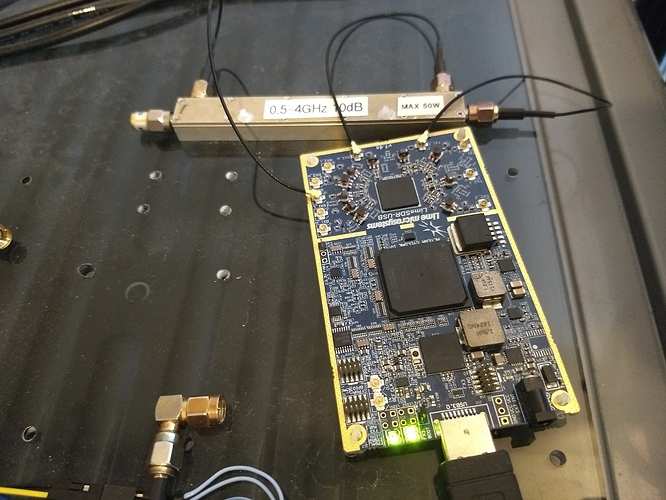Hi @IgnasJ and @Zack
First of all, my feedback.
The new branch allows us to obtain a fixed phase offset among different execution: well done.
Great job, thank you.
Now, only a little step is needed to reach a really useful phase alignment.
It is needed to solve the phase offset dependence on frequency.
Here some data about what we observed.
Data at:
sampling freq= 22 Msps
central freq= 1575 MHz
LPFilter= 21 MHz
A linear dependence is observed like this:
-9 MHz, 41º
-6 MHz, 44º
-3 MHZ, 45º
0 MHZ, 47º
+3 MHZ, 49º
+6 MHZ, 50º
+9 MHZ, 52º
Among different executions, we observe two things:
a) @ 0 MHZ, the phase offset is always 47º (that’s what you just fixed, GREAT!!!)
b) the slope is not constant.
The interesting part is that somethimes we observed a “more sloped” dependence, like this:
-9 MHz, 37º
0 MHZ, 47º
+9 MHZ, 56º
but also an interesting “less sloped” dependence, like this:
-9 MHz, 46º
0 MHZ, 47º
+9 MHZ, 48º
This last condition is a almost real phase alignment because minimizes the frequency dependence and make the system practically MIMO. My feeling is that we are very close. All the comunity spent time in testing it and trying to give a precise feedback about phase alignment.
Only a little last effort is needed. If you could fix it, it would be the best news for us!
If anyone in the community (for example @modimo) could confirm what we observed, it would be great.
cheers
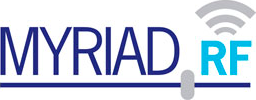

 So probably something else helped. Can you describe what exactly did you do?
So probably something else helped. Can you describe what exactly did you do?
